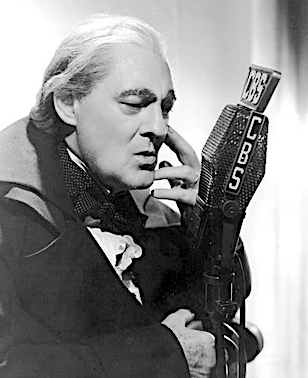Book Review: Dickens's Christmas Carol on Radio and Audio
I’ve played around with the book’s title a bit here because I wanted to draw your attention to why you might want it, so I hope the author will forgive me. The actual title is “Standing in the Spirit of Your Elbow: A History of Dickens’ Christmas Carol on Radio/Audio". The title comes from a vivid quote in the actual book that is beautifully explained in the text.
Anyway, the cool thing about this book is that many of the radio versions discussed are very easy to hear immediately on the internet. Network radio drama fell into public domain (even though there are still copyright issues with songs, personalities and storylines) and the shows themselves are available in several ways:
The best quality versions come from companies like Radio Spirits, which is probably the Tiffany’s of radio drama and comedy recordings. They seek out the best versions and make them sound as good as possible. When you get some show in less expensive ways, they can sound muddy or as if they are underwater. Another company I’ve dealt well with is OTR Cat, which puts shows on disc or download in nice categories – by star, subject, etc.
However, you can also download or stream thousands of great vintage radio shows at several archival sites, even on YouTube. My suggestion is to read the book, check out the version and if you like it, get a better quality copy.
Back to the book. Author Craig Wichman goes into considerable detail about the earliest radio versions, including the Albert Whelan and Bransby Williams (the author declares it a tie for first version). Each performed just the last scene of the book because that’s all that would fit on a gramophone cylinder (Williams’ version was on Edison Records).
Few today would associate the role of Scrooge preeminently with Lionel Barrymore the way people of the mid-20th century did. He played the role eighteen times on various shows, narrating one year and stepping out another due to his wife’s death (his brother John Barrymore filled in for him, repeatedly doing an impression of him!)
There is also a section on recordings, starting with what is presumed to be the first by Ernest Chappell. The coverage again is pretty thorough. Wichman and the writer of the foreword, Fred Guida, offer a disclaimer that the info is never really complete in a book of this nature (Tim Hollis and I conceded that in our book, Mouse Tracks: The Story of Walt Disney Records). Thus I cannot say more that the coverage of children’s records is as good as anyone has ever committed to book form before.
After a chapter about several modern radio versions, including several with the author himself, featuring a very insightful essay from the show’s director about the challenges of radio drama, there is a full listing of every version Wichman could find, and it’s exhaustive—far exceeding anything possible on TV or movies.
Even your humble blogger played Marley and Christmas Present in a two live Disney radio versions years ago. Unforgettable—I scared myself!




